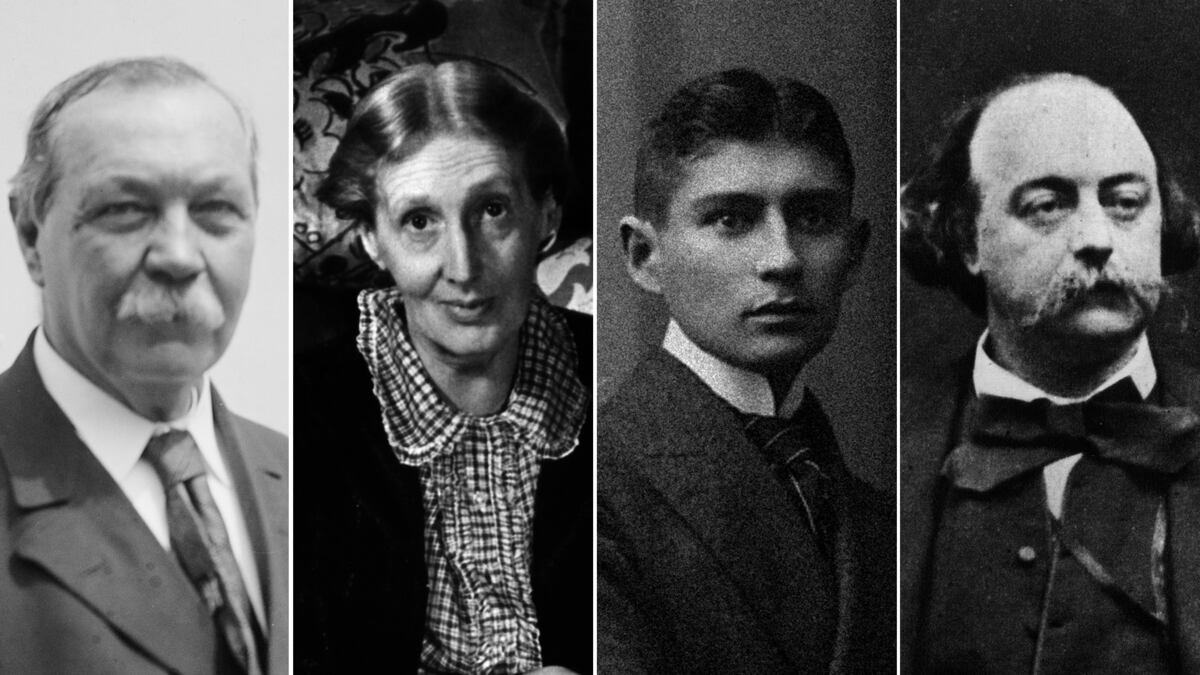James Herriot said that to observe animals is to see their owners, people. The legendary English veterinarian, author of that great manual of human and animal behavior that is
All Creatures Great and Small,
used to hallucinate more with the reactions of ranchers than with his cows and pigs, often victims of their idiocy, their problems. , Its limits.
And focusing on them is what a Valencian writer, Purificació Mascarell, has done, who has gathered together in an incredible anthology stories that place animals at the center of the story. But not only. We will see flies, cows, parrots, snakes, dogs and eagles carrying the essences of humanity. We will see humans who mistreat them; others that humanize them; and some more that deify them. And in the animal mirror we will look at ourselves.
From Flaubert to Kafka, passing through Blasco Ibáñez, Conan Doyle or Virginia Woolf,
The Animated Tale
(Nordic) collects 16 stories not only united by the animal protagonism, but by the enigmatic and metaphorical meaning that they illuminate for the humans who are involved.
“Animals are the perfect metaphor to talk about us, humans. A resource to allude to our feelings and defects, our emotions and inabilities,” says Mascarell. The anthologist, born in Xàtiva in 1985, also a Literature professor, tells in her prologue how the readings that captured her in childhood led to a reflection on the narrative power of these living beings. John Berger draws attention to the theme: animals were the primitive paints and their blood was surely the first pigment. “In them we have always seen a reflection, a question, a mystery,” answers Mascarell. “It seems to us that there is an enigma in their gaze, but in reality the enigma is within us and the only thing we do is project it onto them.”
The stories collected are diverse, different, faithful to the very particular pens of their authors and engines of more and less disturbing metaphors, but all together they invite a kind of game in search of the animal and its meanings, as if we were following the footprints of a Wally hidden in each of them. Through Clarín we will meet a cow, La
Cordera
, whose owners will sadly see going away on a train towards the slaughterhouse in a destination (probably) similar to the one to which one of the children will later follow towards the ranks. The king summons him and there are no contacts to get rid of the Carlist war. From the hand of Chekhov we will remember the little dog that accompanies that lady in her adulterous relationship with a man in love with her. Joyful witness of a drama in the making. With Blasco Ibáñez we will make friends with a lagoon snake and it is not difficult to imagine the end. With Pardo Bazán we will experience Peludo's Christmas, an abused donkey who will be allowed a beautiful fantasy.
There are many gems in
Animated Stories
and especially disturbing is
Report for an Academy,
in which an ape takes the floor in Kafka's pen to recount his conversion into a human. The Czech author uses all the symbolic power that he knew how to wield in
The Metamorphosis
or
The Trial
to give us a chimpanzee who has learned to imitate humans to survive until he becomes one: he already knows how to spit, touch his belly and has even learned to drink brandy. , which horrified him. He is already one of ours. And not because he has learned all that, but, above all, because he has known how to draw the difference between a freedom (impossible) and “a way out” (possible). Wise ape.
And, Kafka tells us, we tame animals because we ourselves are tamed. “Yes, we tame animals because our socialization involves a lot of taming, in fact, and sometimes we are so envious of the absolute freedom that animals experience that we need to cruelly take it away from them to feel less mediocre and stronger compared to them,” Mascarell responds. . We will also find reverse dressage.
Special mention deserves the story of Felicidad, a humble servant who is the protagonist of a story by Flaubert,
A Soul of God,
who has been so lacking in life that she gives all her affection to a parrot. There are beings that mistreat animals, others humanize them and some even deify them, we said. And this is the case of a protagonist who ends up praying to her parrot.
“On him he projects all his need to sacrifice himself for others.” His story, Mascarell assures, is one of the examples that separates this literature from fables, those children's stories in which animals behave like human beings. “In the literary stories of modernity, the animals are themselves, they are real animals, but they function as symbols and contain the interpretive key to the entire literary scaffolding.”
The writer remembers how she became so infatuated with a firefly in her childhood that she took it home and put it in a box. In the morning she didn't shine, she was dead. That worm of light revives in her memory and in a book in which, as she explains, she has composed a “mosaic of voices and modalities, because there are from detective stories to metaphysical ones, including picaresque and horror. ”. A jewel.
All the culture that goes with you awaits you here.
Subscribe
Babelia
The literary news analyzed by the best critics in our weekly newsletter
RECEIVE IT
_

